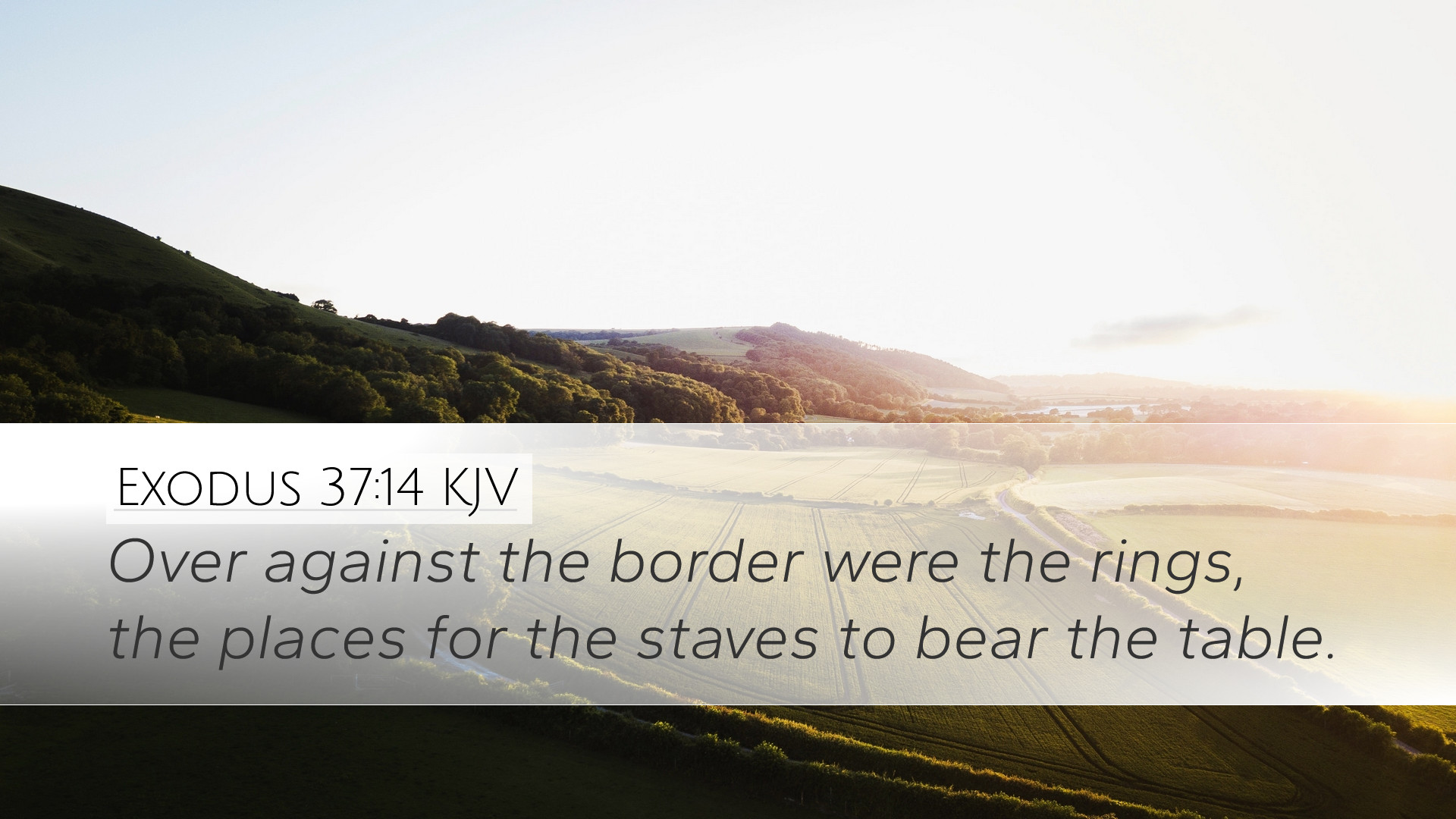Commentary on Exodus 37:14
Exodus 37:14 states, “And the staves were in the rings of the ark: they were not removed from it.” This verse is part of the broader account detailing the construction and furnishings of the Tabernacle, particularly focusing on the Ark of the Covenant. This commentary draws insights from respected public domain commentaries to provide theological depth and practical applications to this passage.
Historical Context
The context of Exodus 37 falls within God's instructions to Moses regarding the Tabernacle, a holy place where God would dwell among His people. The Ark of the Covenant itself held significant importance as it contained the tablets of the Ten Commandments, symbolizing God’s covenant with Israel.
Moses and the Tabernacle
Moses' detailed instructions from God, which are repeated in the book of Exodus, highlight the importance of both fidelity to God's specifications and the necessary holiness surrounding the worship of God. The Ark, representing God's presence, was central to Israel's worship.
Understanding the Ark's Staves
The mention of the staves in Exodus 37:14 indicates that these poles were integral for transporting the Ark. According to Matthew Henry, the permanence of the staves reflects an enduring readiness for worship and movement in the presence of God. The Ark, being a vital component of the Tabernacle, needed to be moved as the Israelites traveled. The staves signify that God’s presence is not confined to one location; He goes with His people.
Spiritual Symbolism
Further examining the staves, Albert Barnes notes that their continuous presence in the rings of the Ark symbolizes the enduring relationship between God and His people. The staves not being removed suggest that the Ark's functionalities — that of guidance, presence, and the covenant — are always available for the Israelites. This embodies the idea that God is omnipresent and always accessible.
Theological Reflections
In this verse, we can notice several theological implications:
- Divine Presence: The Ark represents God's covenant with His people, and the staves serve as a reminder that God’s presence goes before them.
- Holy Mobility: The continual presence of the staves allows the Ark to be carried wherever the Israelites travel, symbolizing that God's holiness is not tied to one specific location.
- Covenantal Responsibility: With the presence of God comes the responsibility to uphold the covenant and obey His commandments.
Applications for Today
This verse can remind pastors, students, and scholars of the importance of maintaining God’s presence in our ministry and lives:
- Preparation for Movement: Just as the staves were always ready for travel, we must remain prepared to move when God calls us, ready to serve in new ways.
- Unceasing Reverence: The staves' permanence invites us to an ongoing reverence for God's presence in worship and daily life.
- Community Engagement: The collective journey of Israel underscores the importance of community in the faith journey. We are called to carry the weight of God’s presence together.
Concluding Thoughts
In summary, while Exodus 37:14 may seem like an underscore detail of construction, it is embedded with profound spiritual truths valuable for worship, community responsibility, and God’s abiding presence. As we reflect on this verse, let us cherish our calling to carry God’s presence with us in every aspect of our lives, echoing the behavior of the Israelites as they followed their God through the wilderness.
References from Commentaries
This commentary has integrated perspectives from:
- Matthew Henry
- Albert Barnes
- Adam Clarke


